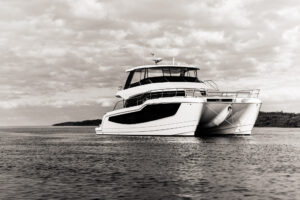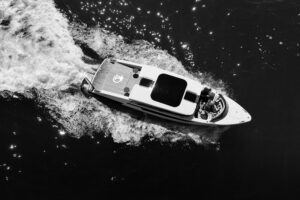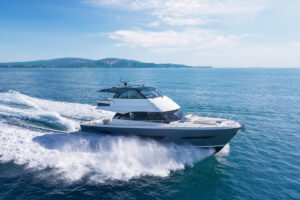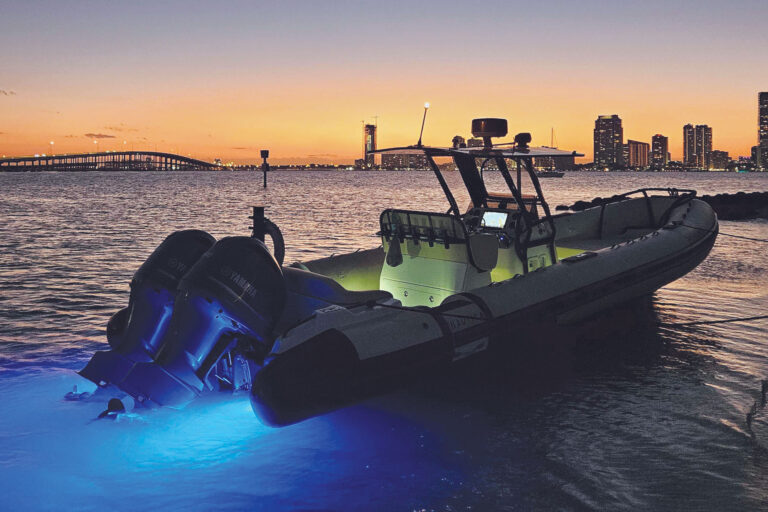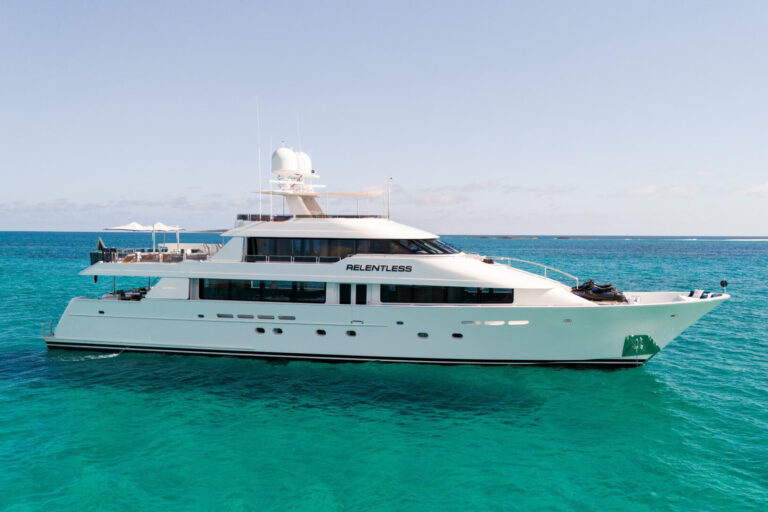
I thought i was seeing double!” Capt. B exclaimed into the phone. “Did you tip too many tots of bourbon?” I asked. “No, no,” he answered. “Do you remember the custom 64-footer we built years ago? Well, a copy of her arrived last night and parked in my haul-out slip. She’s a forgery. Can’t you designers ever come up with anything original?”
While Noah had likely swung an adze in Capt. B’s yard, the 64-foot relic he spoke of was from the casual-classic earth tones, mirrors and ultra-suede period of the early 1980s. The “forgery” was decades younger, a product of the techno-classic gloss-teak, sisal and pop-up-TV period of the early 2000s.
“They’re identical, for God’s sake,” he said. “It’s nothing less than plagiarism. Don’t you designers have a code of ethics?”
I pointed out that one couldn’t plagiarize one’s own work. Both boats were from a firm I was once associated with.
“OK, then it’s the equivalent of turning in the same research paper for two different classes,” Capt. B charged.
“Maybe so, but the odds of two builders cobbling the same creation is unlikely,” I argued. “It would be nothing short of a miracle if you and one of your peers had actually followed a set of plans.” “No sense in debating,” he said. “Come see for yourself.”
These days, Capt. B’s yard is focused on faith healing (service), but the buildings and sheds still have the salty patina of a place that once dabbled in the dark arts (yacht building). Capt. B’s home sits like a fortress guarding the fairway in and out of the yard’s basin. He keeps an eye peeled for vessels in need and ensures that only those that are properly cured and paid in full are released.
I passed a fleet of recent arrivals undergoing treatment as I made my way to Capt. B’s office. He greeted me, and we marched to the yard’s storage catacombs, where a yellowed image of his 1980s build hung on the wall. Faded blueprints of the design lay on the table.
“Look familiar?” he asked.
I pointed out that one couldn’t plagiarize one’s own work. Both boats were from a firm I was once associated with.
“Maybe,” I said, hoping my initials weren’t in a title block.
“Well, perhaps this will refresh your memory,” he said, pulling open the curtain and revealing the “forgery” that was floating nearby.
“Why yes, of course. I believe I do recall her now,” I confessed. “A proper yacht indeed: attractive lines, and she appears well-balanced. I’d bet she’s a good sea boat. Nice work.”
“That’s not her, and that’s the point,” Capt. B groused.
“Perhaps not, but certainly your earlier effort contributed to her DNA,” I said, appealing to his sense of reason.
“Admit it, Coyle: You and your brethren do nothing more than paint by the numbers,” he said. “Yacht designs are no more original than musculatures in charcoal or bowls of fruit in pastel.”
Capt. B had a point. While one practices the art of yacht design, the challenge is always balancing the client’s stylistic whims with the realities that the sea and science demand. When the “numbers and paint” align, form follows function, and an artist’s study is a masterpiece.


